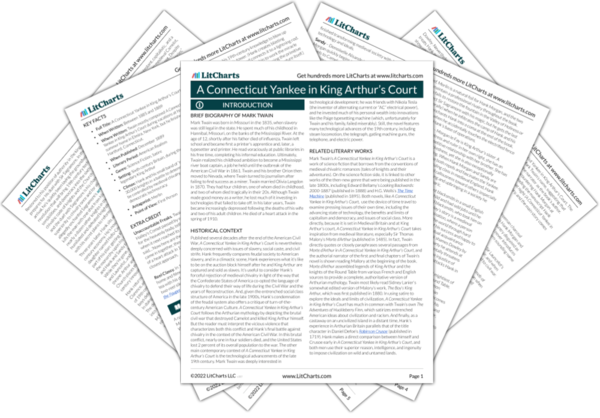Having just had to explain away the evident limits on his magical ability to mind-read to Arthur, Hank takes a proactive stance here to explain why he won’t be able to deploy another miracle (at least until he gets another torpedo from his weapons factory). Again, the knights’ gruesome end points toward Hank’s power being destructive, not creative.
